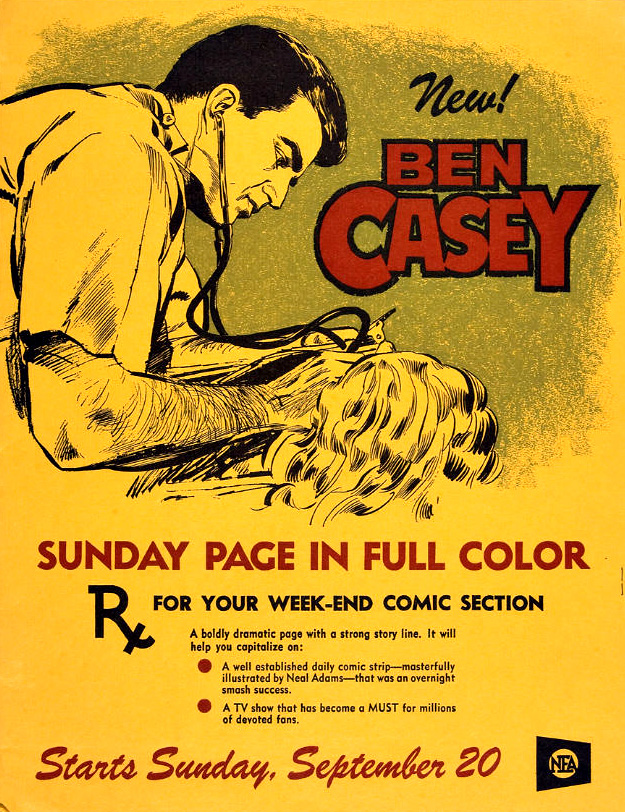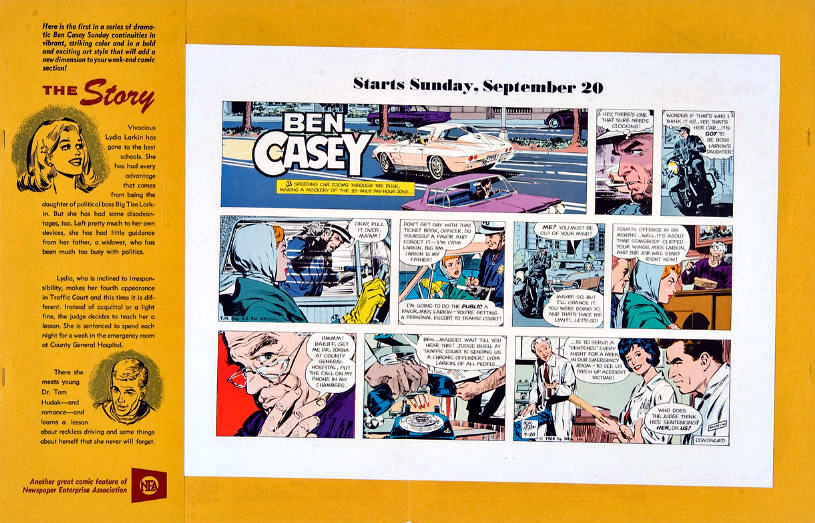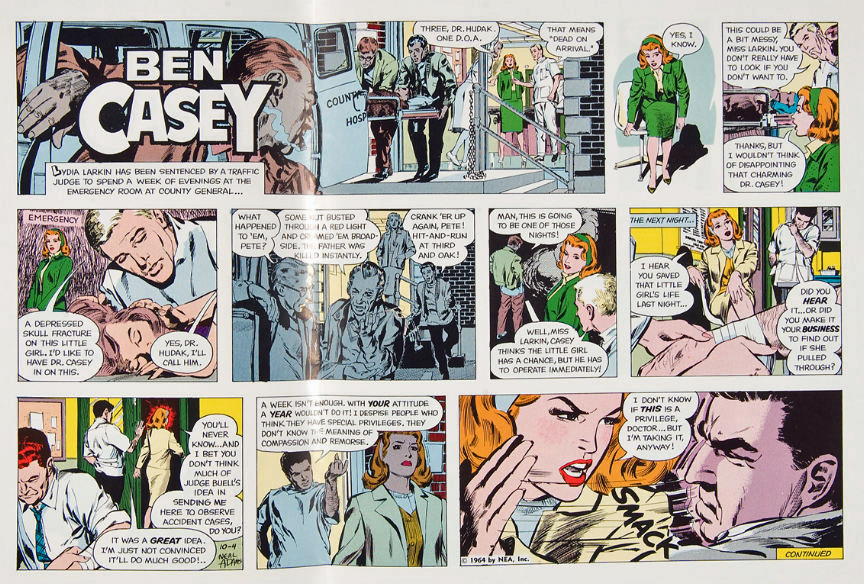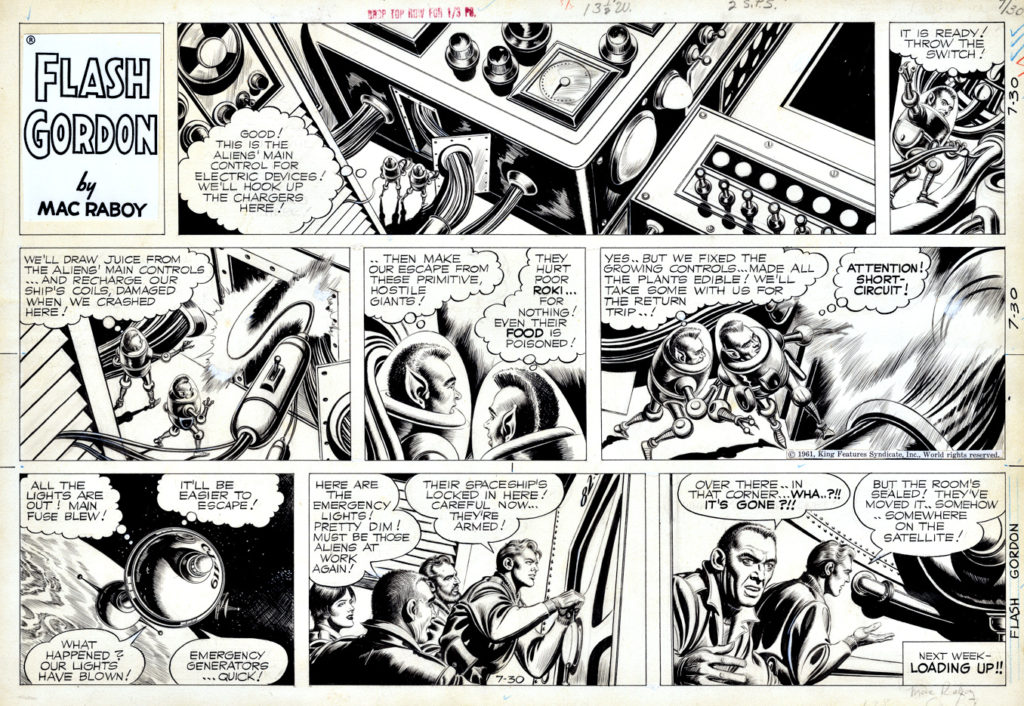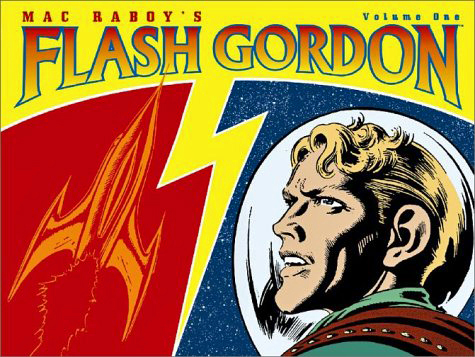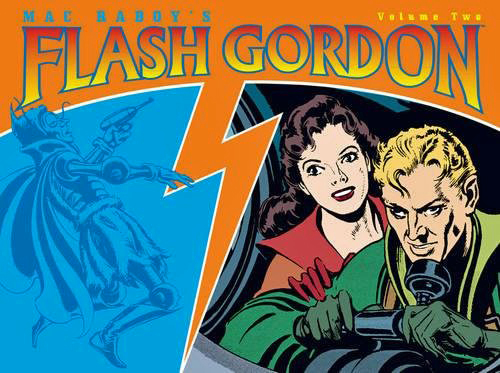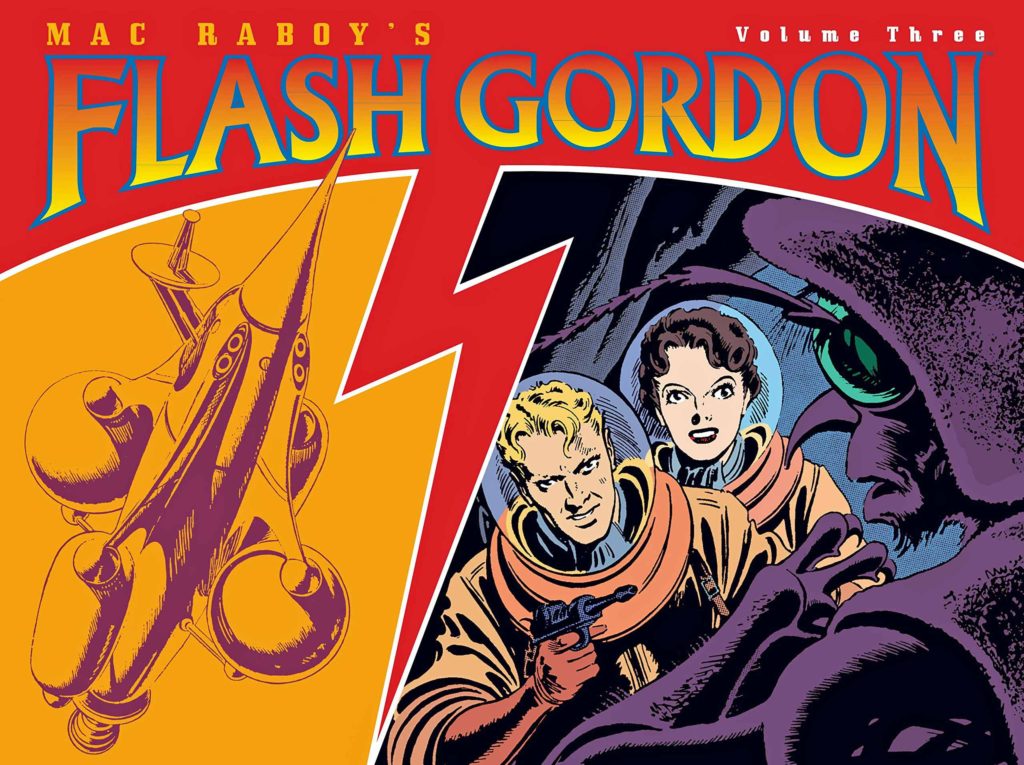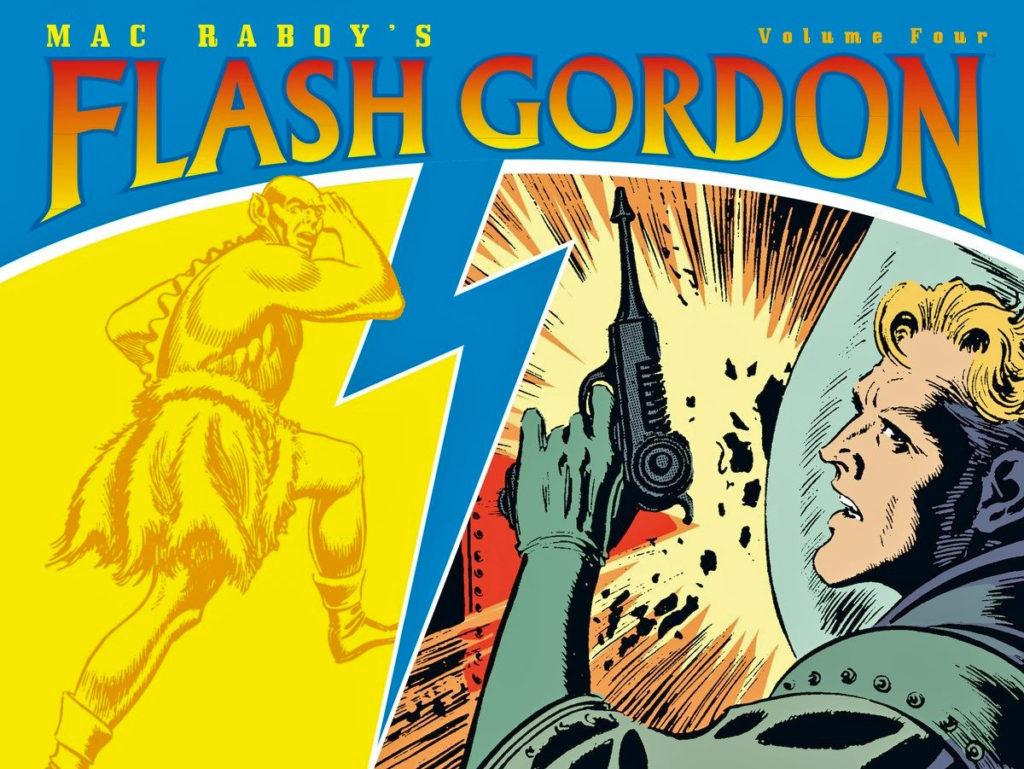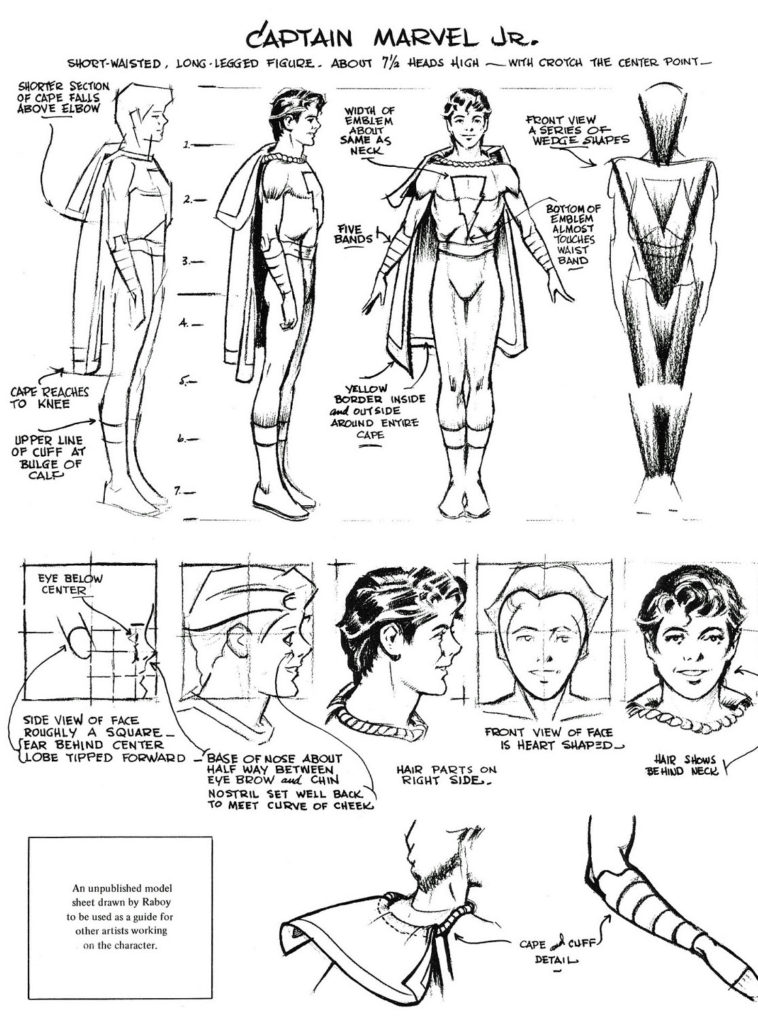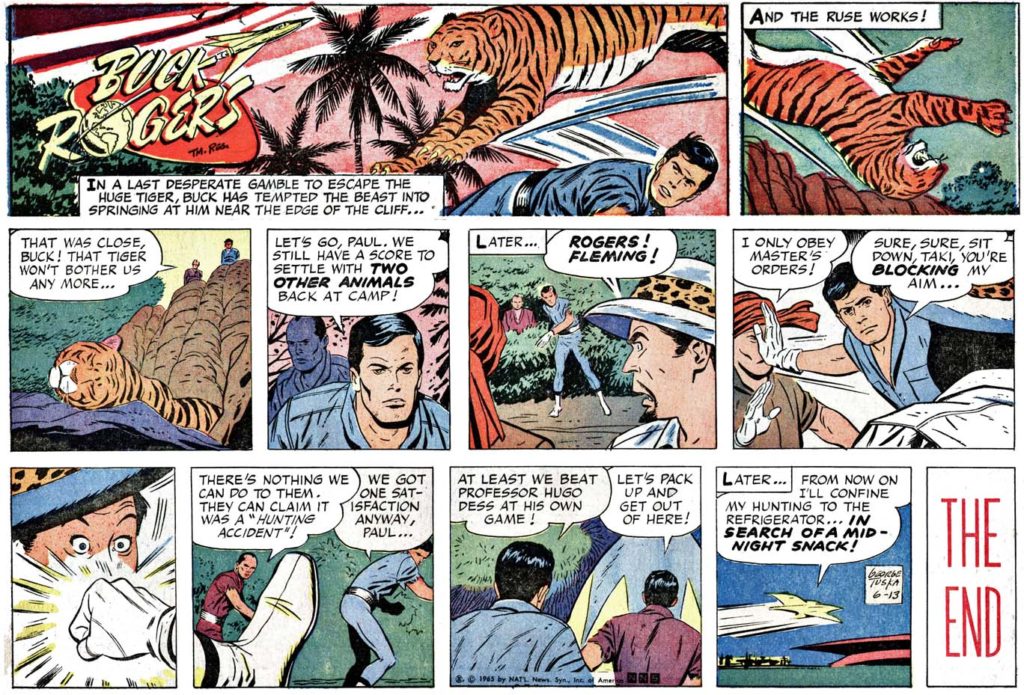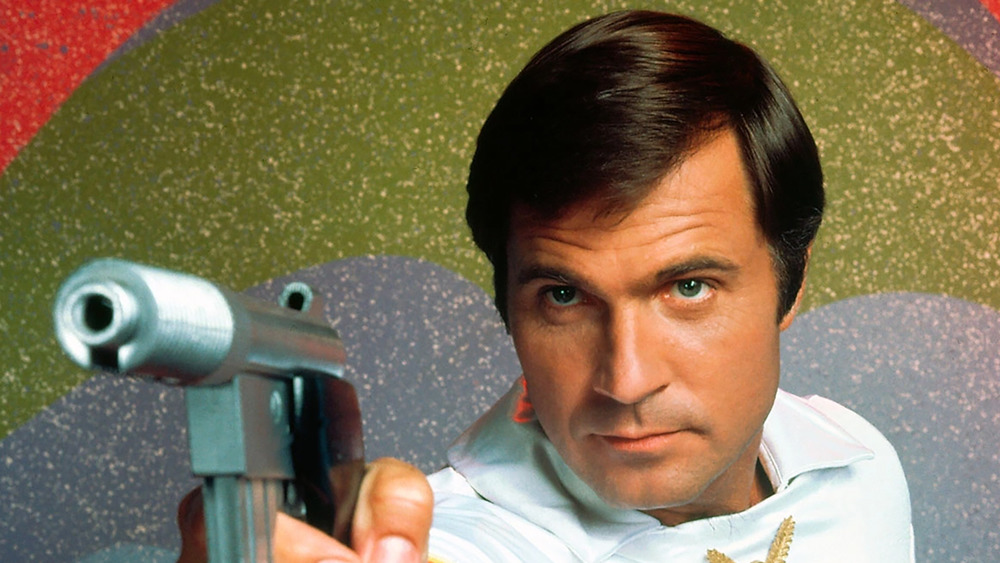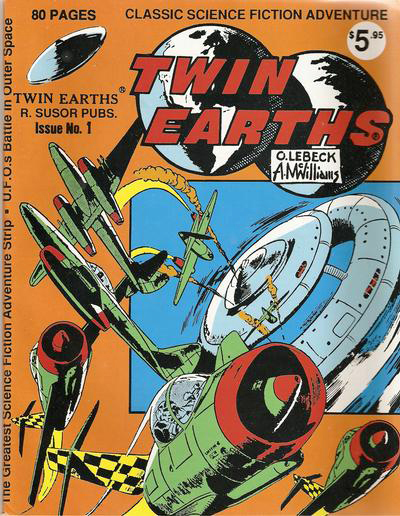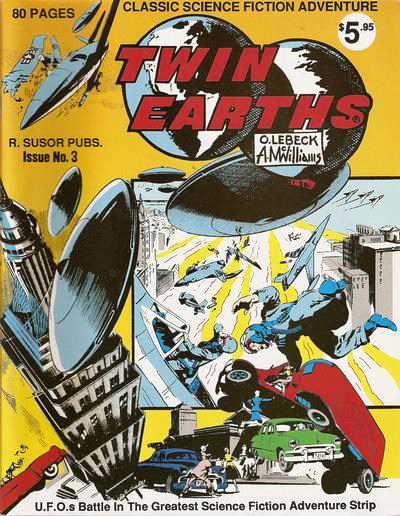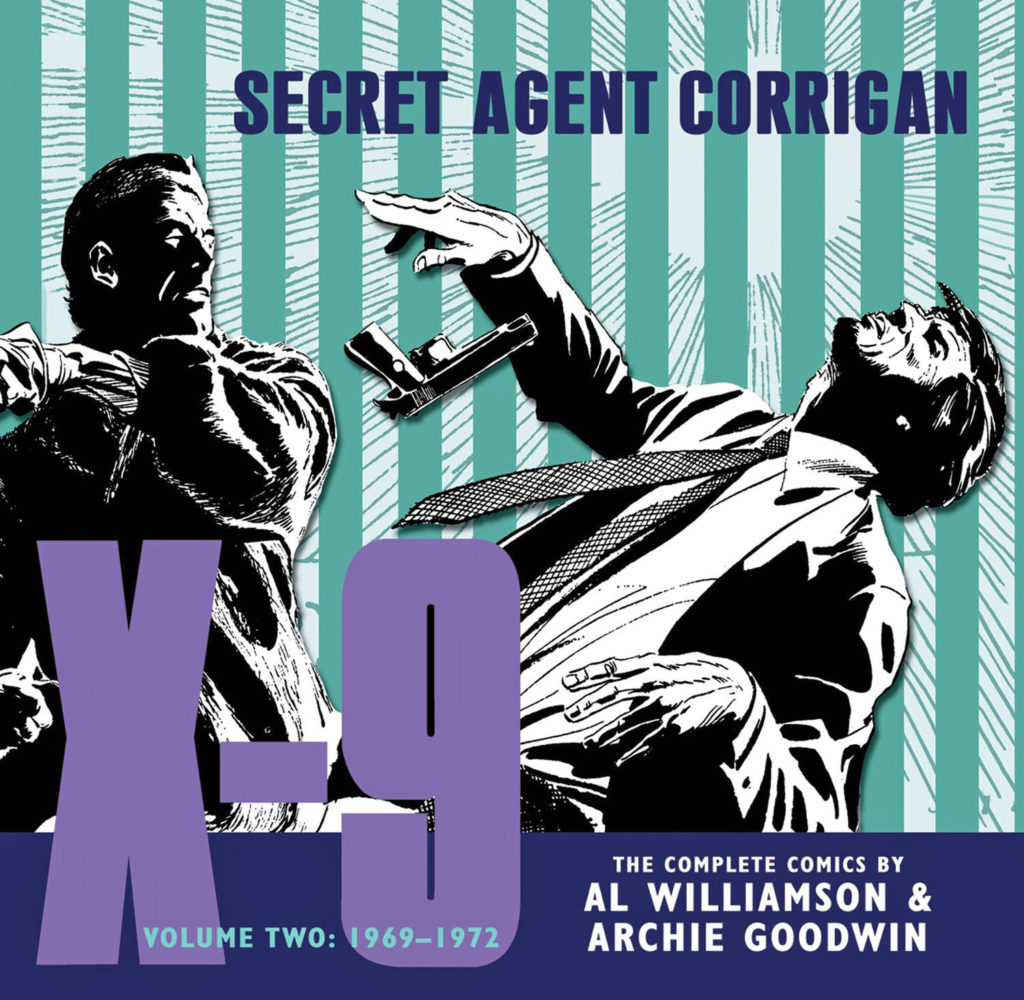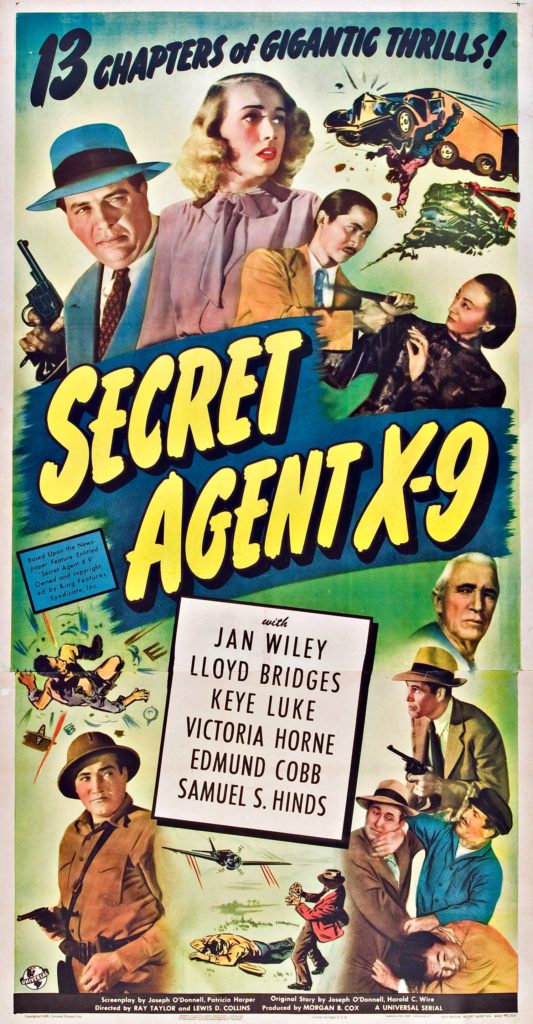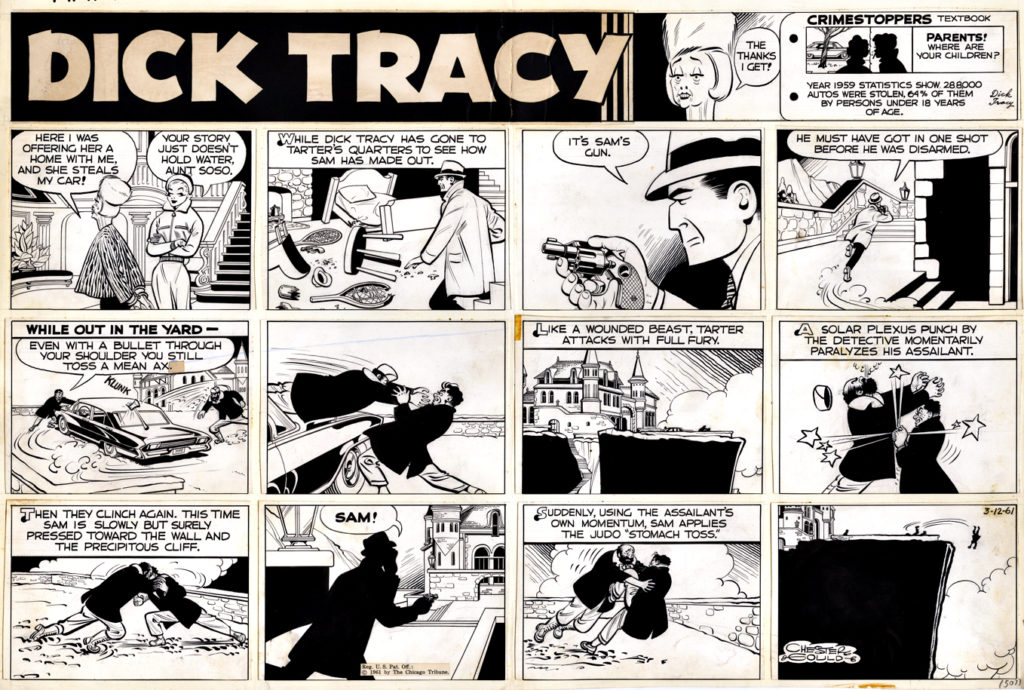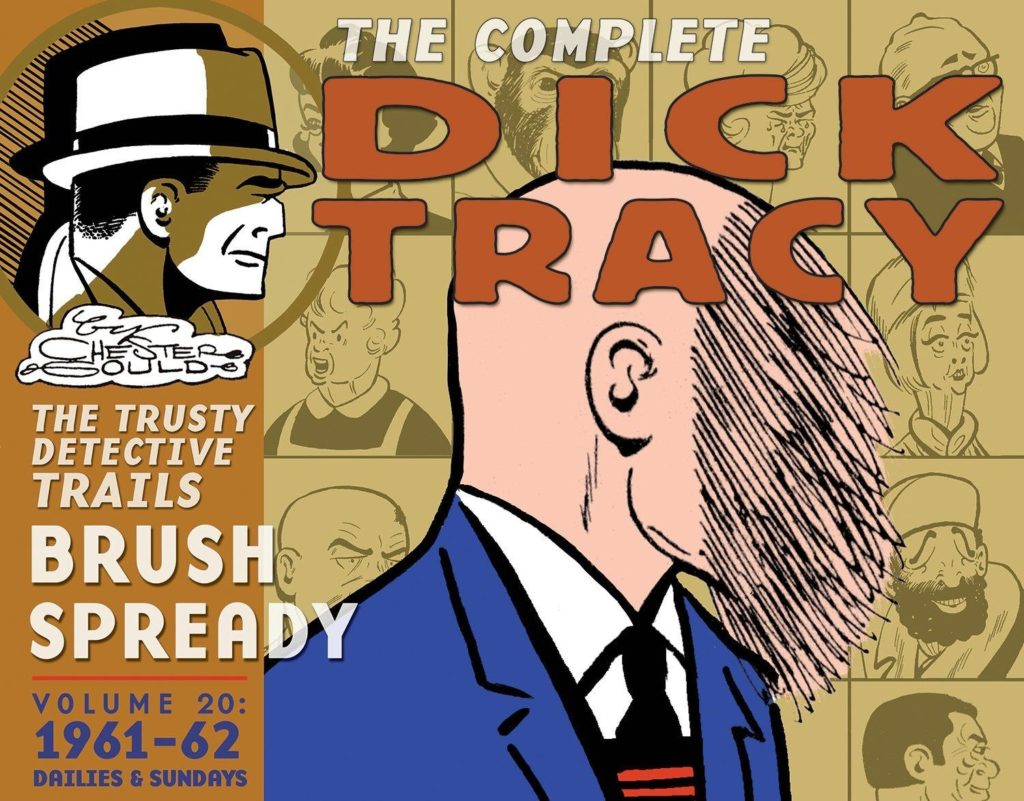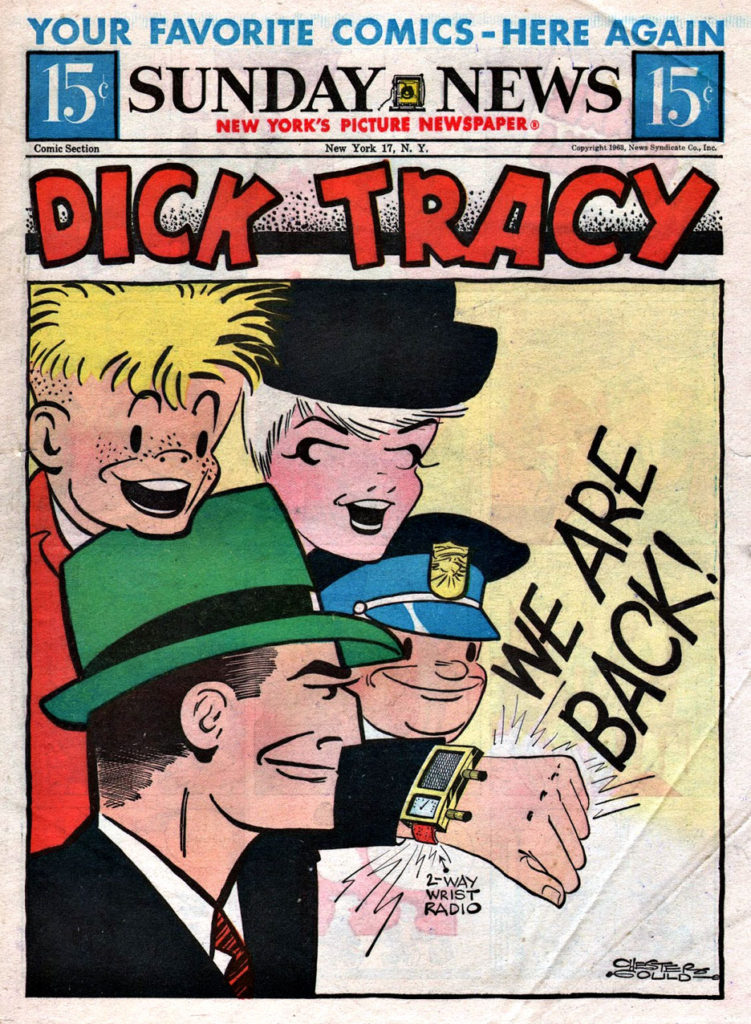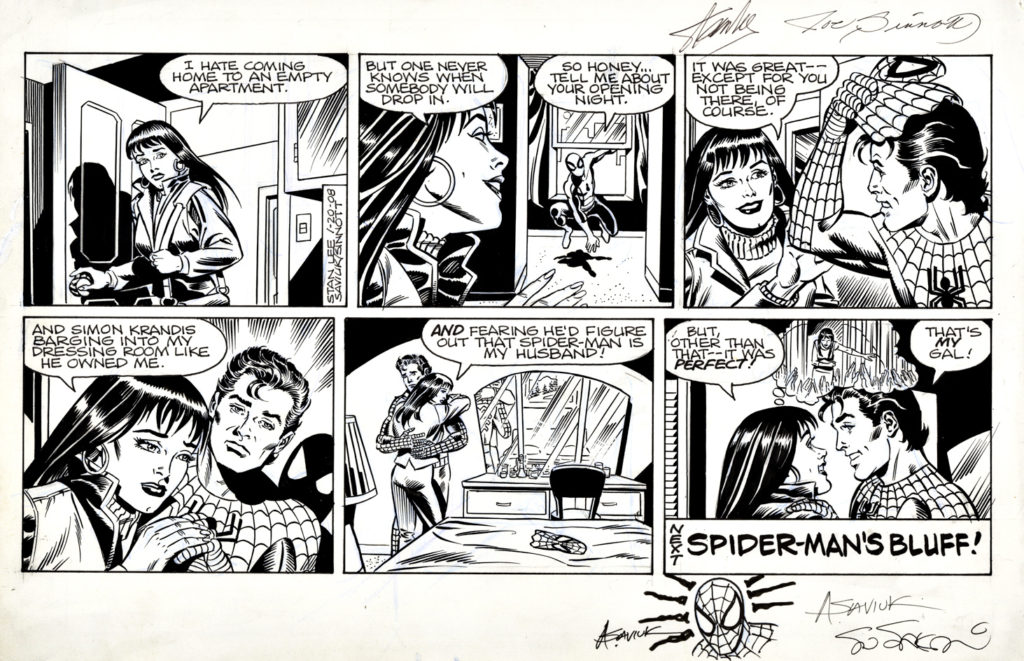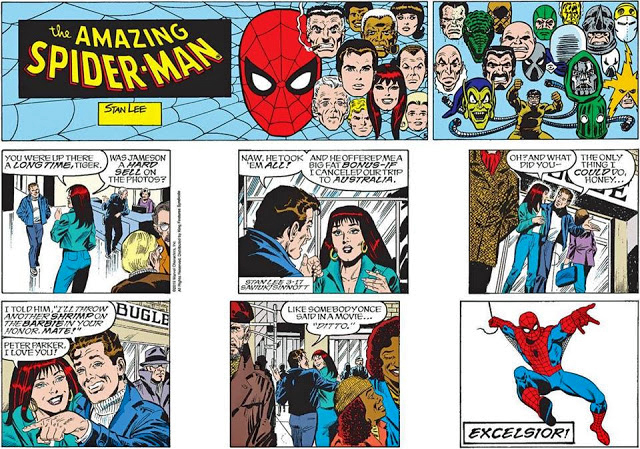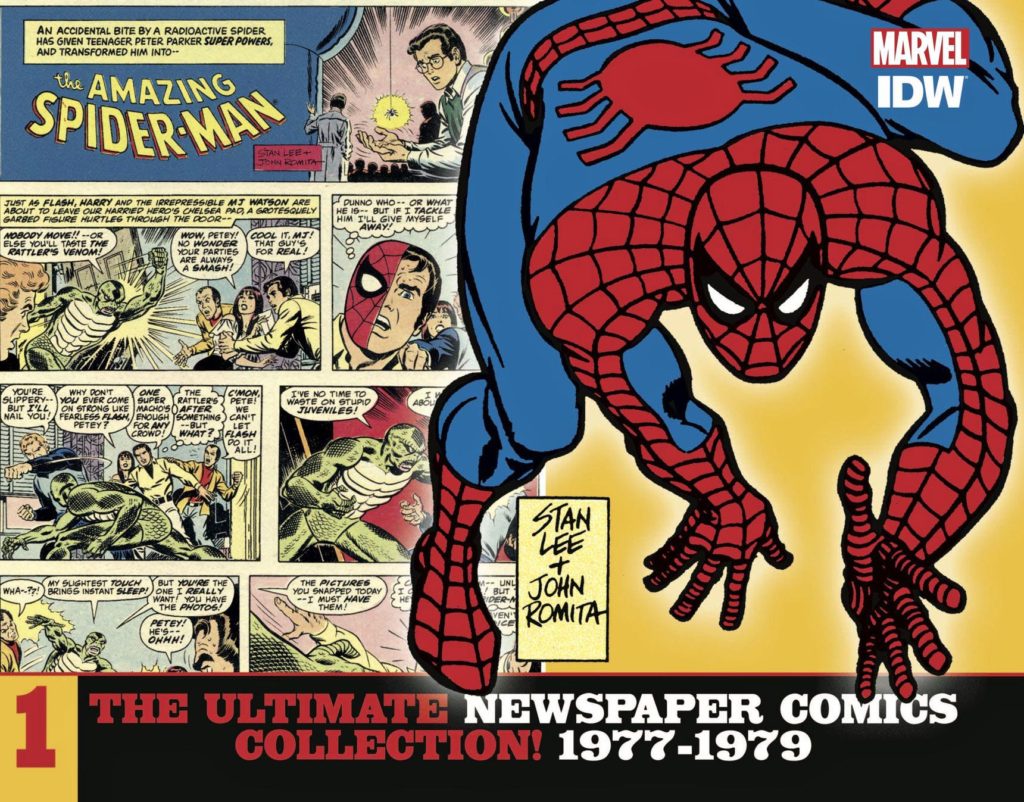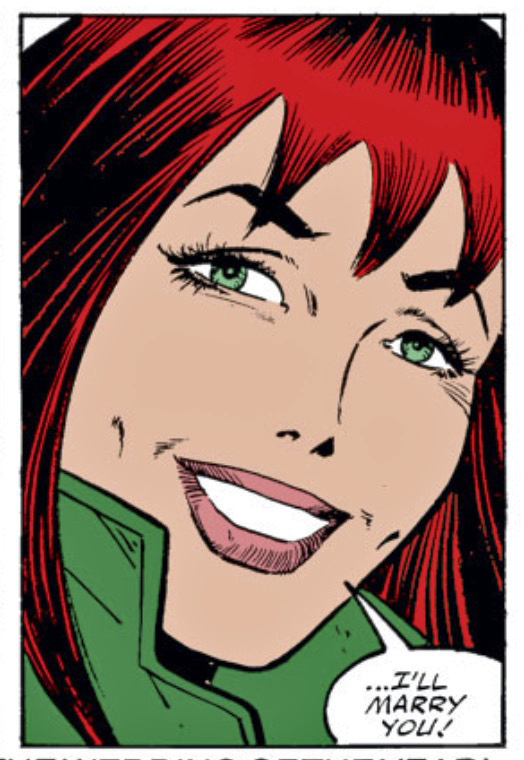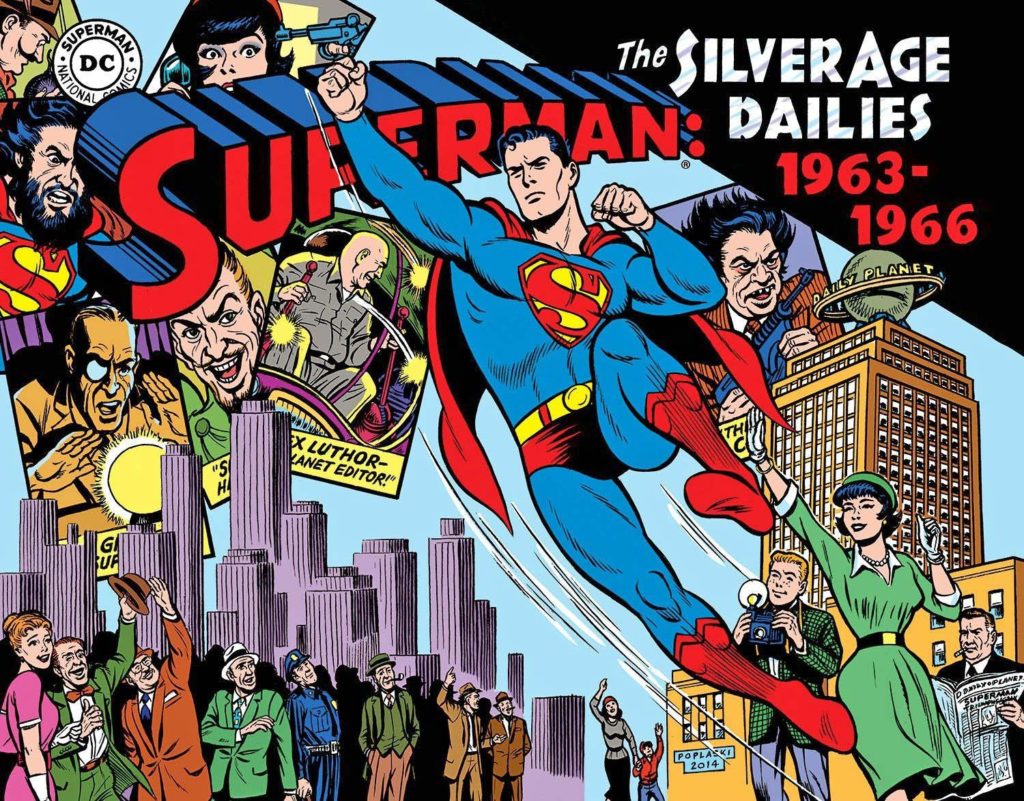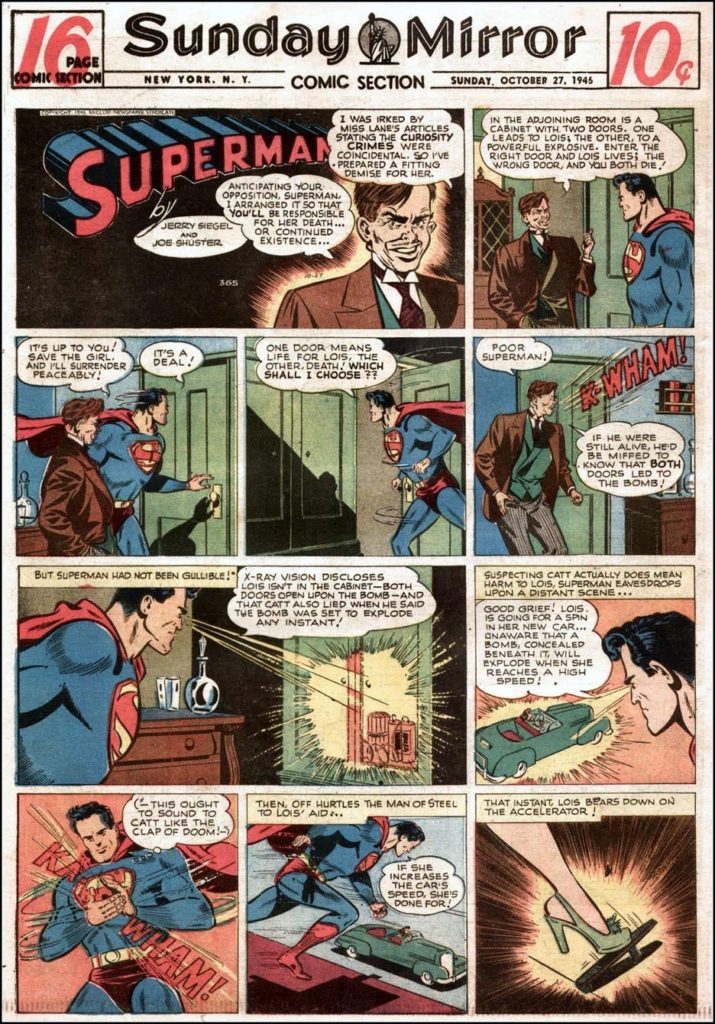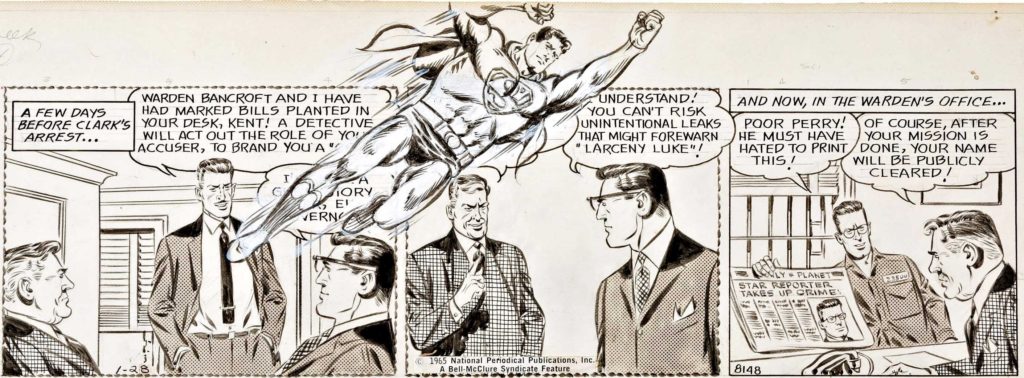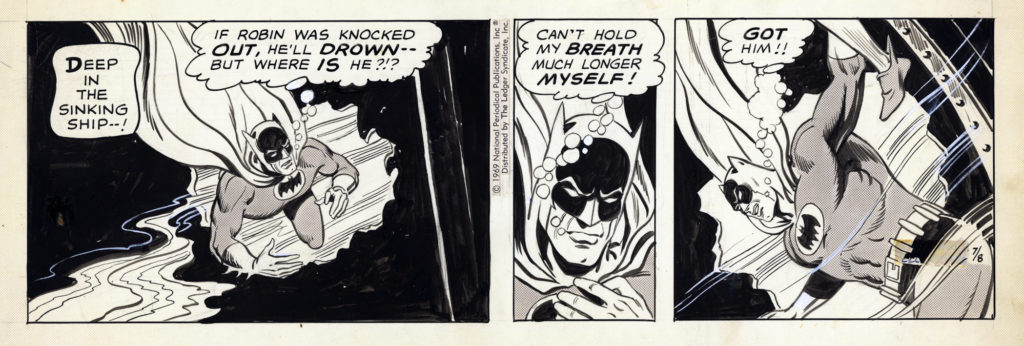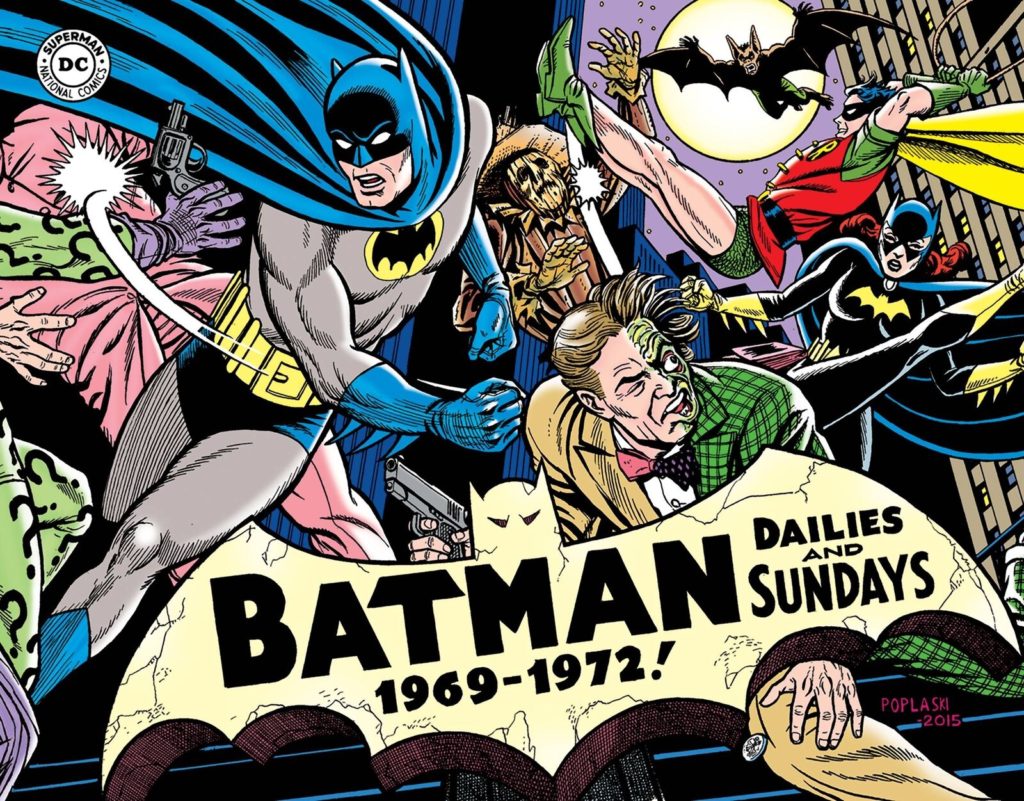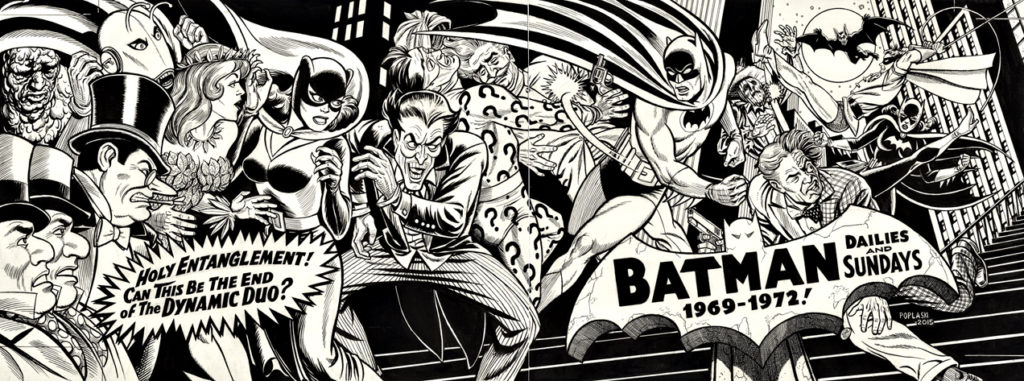Neal Adams — Happy (Belated) Birthday
Ben Casey, Daily Strip, April 15,1966
Neal Adams turned 80-years old last Tuesday, June 15.
I’ve been planning for months to pay tribute to great strips, and great strip artists, in the month of June.
Had I been able to logically put two and together, this post would have run last week, not today.
In other words, I’m a week late… and a more than a dollar short. Ack.
As for Dr. Ben Casey? From Neal’s own website:
“When charming and talented Neal Adams was just 21, he was awarded the art chores of the comic strip based on the popular TV show Ben Casey staring Vince Edwards. One of the youngest, syndicated strip artists, Neal started his groundbreaking work on November 26, 1962 and the Sunday strip was added on September 20, 1964. Four years later, the strip ended as the television show did, but Neal’s career was just starting.”
I have a lot of “favorite” artists, but the one who had the most impact on me as a youngster was — you guessed it — Neal Adams.
And the charming side of him can indeed be charming as hell.
Fun fact: A collection of all Neal’s Casey strips should be considered a holy grail of archival reprints.
We tried. We really tried.
Can’t win them all.
Continuing our month long celebration of the great adventure comic strips:
Week 1: Superheroes
Week 2: Detectives
Week 3: SF
Week 4: Comic Book Giants


